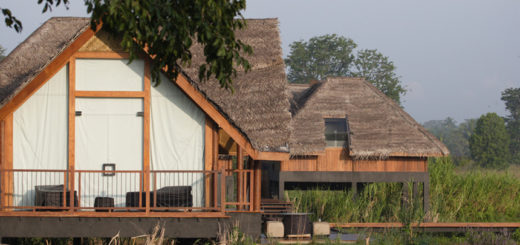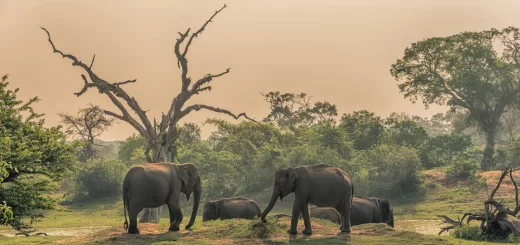Golden Heritage and Rich Cultural mix of the Pearl of the Indian Ocean
by Jetwing · Published · Updated
The First Kingdom of Sri Lanka, “Anuradhapura”, which was established by king Pandhukabhaya, who constructed and brought the city to a state to make it the first capital of Sri Lanka, found in Ptolemy’s World Map, proves to hold a greater cultural importance for Sri Lanka, especially with the arrival of the sapling from the Sacred Bodhi Tree during the arrival of Bhikkhuni Sanghamitta for the establishment of the Order of the Nuns in Sri Lanka for the first time.
The formation of the Holy City of Anuradhapura dates back to 377 BC, and the strong bond shared between King Ashok of India and Devanampiya Tissa was the foundation for the Buddhist religion to be introduced in Sri Lanka at Mihintale during the visit of Arahat Mahinda.
The Sapling from the Sacred Bodhi Tree is still found in Anuradhapura, and is still being under careful attention of the locals to make sure it survives for many believers from all over the world to witness the Holy Bodhi Tree.
Ruwanweli Seya, one of the most famous structures of the Anuradhapura Kingdom, height 91 meters, is a masterpiece of King Dutugamunu, as a result of the victory gained after the war against the Chola King Elara.
Samadhi Statue that demonstrates the deep meditation posture of Lord Buddha proves the historical art and heritage of Sri Lanka, carved out of dolomite marble rock.
The standing Buddha Statue “Aukana” should not be missed to be witnesses at its best.
Polonnaruwa was made the second kingdom of Sri Lanka, after defeating the great Chola rulers under which Sri Lanka was kept for many years and King Vijayabahu the first, regained the kingdom and was able to bring the country under one local ruler in 1070 AD.
Gal Vihara I one place that should not be missed as you can witness the four beautifully carved statues of Lord Buddha being carved out of the same enormous granite rock face.
The smooth surface of the statue, the cool welcoming breeze and the golden shining sun, is the best whether for a memorable pilgrimage tour to the cultural triangle of Sri Lanka, in which Gal Vihara is one memorable stop spot where I suggest to climb the facing rock and sit back, just stair and observe the beautifully carves statues of Gal Vihara.
The reclining statue of Lord Buddha is also a wonderful site up from the facing rock, where you can sit under the tree and actually meditate, while the breeze across the area calm and ease your mind. The reclining statue of Lord Buddha can be captures once you reach the facing rock.
Polonnaruwa Kingdom of made colorful by King Parakramabahu, whose’ greatest construction was the “Parakrama Samudraya”, which was built by him to save each drop of water that created from rain to be preserved for the future use. During his era, Sri Lanka was known as a self satisfied and very prosperous country had no shortage of rise or the essential goods for day to day life.
Sigiriya Rock Fortress, known as “The Fortress in the Sky”, is believed to be the kingdom of King Kashyapa, is well known for its’ famous Sigiriya Frescos, the Mirror Wall, Water Gardens and the Boulder Gardens. The mystery behind most of it’s’ structures are yet to be discovered and it proves the level of architectural knowledge the Kings of Polonnaruwa Era.
Dambulla Rock Cave temples are also one of the most important sites during your visit to the cultural triangle. Calm and peaceful, the way up the mountain, you would pass many side shops selling antiques and other products that are unique to the area.
Up the hill as you approach, you would see a rock and the temple build on the inside face of the massive rock and the rock being carved inside to build the five different caves within, it is dedicated for various Gods and Goddesses.
The first cave includes an enormous reclining statue of Lord Buddha and the beautifully finished paintings of the cave dates back to many several years, tells a historical incident that took place during the times of Lord Buddha’s stay in Sri Lanka.
The close relationship between Sri Lanka and Buddhism has built a rich and historic bond between the cultures and village lives of Sri Lankan. The village lives were mostly dependent on the temples and the many Stupa and Vihara that was built during the era of both Polonnaruwa and Anuradhapura and even Yapahuwa and Dambadeniya Kingdoms.
Sri Lanka as a whole offers the above key sites that should not be missed if you are to witness the culturally rich island of true Sri Lanka.
By Milani Wickramaratne
(Sri Lanka Tailormade)




